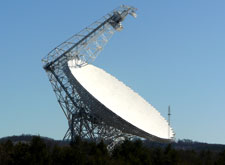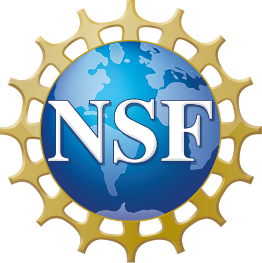GBT 4mm Receiver Project Book
Chapter 7
Monitor and Control
Author: Mark Whitehead
7.1 Introduction
The GBT monitor and control system, named Ygor, is a distributed object-oriented telescope control system written in C++. The system consists of a set of devices which must be configured to accomplish observations (or scans). Each device in the system, such as the 4mm Receiver, is an autonomous subsystem which can be fully configured prior to a scan through a finite set of control parameters in order to run the scan in coordination with other devices. For purposes of configuration and observing, each device requires no more than four interfaces (monitor, control, message/alarm, and data) which are identical for all devices (see Clark, 1998 for more details).
In addition to creating an Ygor manager, additional tasks may be required to integrate a new receiver into the M&C system. Sections 7.3 - 7.5 list the relevant tasks.
7.1.1 Calibration Optics System
The calibration system is described in the Monitor and Control Bus Interface Specification (see sections 2, 3.4 and 3.5).7.2 4mm Receiver Interfaces
The four interfaces described above are organized using the concept of a manager. In the GBT monitor and control system, the manager concept is expressed as a C++ base class. A library of code exists which provides reusable modules derived from and supporting the manager base class.
7.2.1 Manager
Since the 4mm Receiver will not have any noise calibration diodes, the manager will derive from the GregorianRcvrMgr base class. This base class utilizes existing code to monitor and control the standard cryogenics and power supplies.
The GregorianRcvrMgr already includes code to access the Standard Interface Board (SIB) on the Receiver Room Monitor/Control Bus (MCB). Moreover, the manager is coded up to monitor and control standard cryogenics and power supply hardware via the SIB interface. The standard monitor and control values are listed in the following sections.
7.2.2 Monitor
Individual monitor values are grouped together using a Sampler class. Samplers contain the monitored values along with a time stamp. The GregorianRcvrMgr base class provides six samplers:
- Cryogenics
- Cryogenics Status
- Cryogenics Status Bits
- Cryogenics State Control Monitor
- Supply Volts
- Gregorian
7.2.3 Control
Each control value is represented as a Parameter class. The Parameter class provides the ability to validate control data before the manager sends it to the hardware.
The existing default control parameters associated with GregorianRcvrMgr as well as the new parameters required for the 4mm receiver are provided here.
7.2.4 Data
By convention, the receiver calibration engineering FITS files produced during a scan will be generated by the Measurements Manager.
7.2.5 Alarms
Ygor includes a messaging subsystem that displays diagnostic information to the GBT operator.
The default messages associated with GregorianRcvrMgr are provided here.
TBD: Determine the custom Ygor messages for the calibration optics and any other specified 4mm receiver hardware.
IN PROGRESS
7.3 4mm Receiver M&C Integration
IF Manager
As described in chapters 3 and 6, the instrument will be connected to the GBT IF routing system. Consequently, the IF Manager will need to modified to include a model of the IF path for this instrument. Figure 6-1 shows a block diagram of the components in the IF path.
A modification request to modify the IF Manager can be found here.
LO1 Manager
As described in chapter 3, the instrument will use both LO1A (for the front-end LO) and L01B (for the MMC LO). Consequently, the LO1 Manager will need to be modified to include a frequency lookup table for this instrument.
Note that the instrument will use ports available on the Millimeter Converters in an arrangement similar to the Ka-band front-end.
The receiver configuration file will be modified to include the following LO information:
- LO1 receiver model information (e.g. sideband, LO multiplier, etc.).
- Frequency vs. LO1 power level data for the LO1 auto-leveling.
- LO1 input ports.
Measurements Manager
Update Receiver database with calibration information if appropriate. The existing tools and file format should support the 4mm receiver needs.
Antenna Manager
Determine if any Antenna Manager changes are required, e.g. updating of receivers database used by antenna, apply beam offsets in the Antenna manager, etc.
CLEO
A custom CLEO screen will be required. Contact Ron Maddalena once the monitor and control parameters are fully defined.
7.4 4mm Receiver Observing Interface
Configuration
Modify the configuration tool to support the new receiver.
Balance
Identify which parameters can be modified to balance the signal via attenuators.
Identify which sampler values can be read to determine what balance parameters have changed.
Observation API
Determine if turtle requires changes to support the new receiver.
GBT Status
Determine if any GBT Status changes are required.
GFM
Determine if any GFM functionality is affected (e.g. Peak and Focus).
Astrid tab
Determine if the instrument warrants a custom tab in Astrid for observers.
7.5 4mm Receiver Data Analysis and Reduction
GBTIDL
Determine if any data reduction changes are necessary to accommodate this new instrument.
sdfits
Determine if any sdfits changes are required to accommodate this new instrument.



